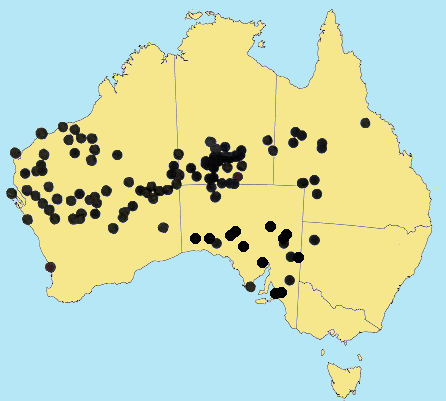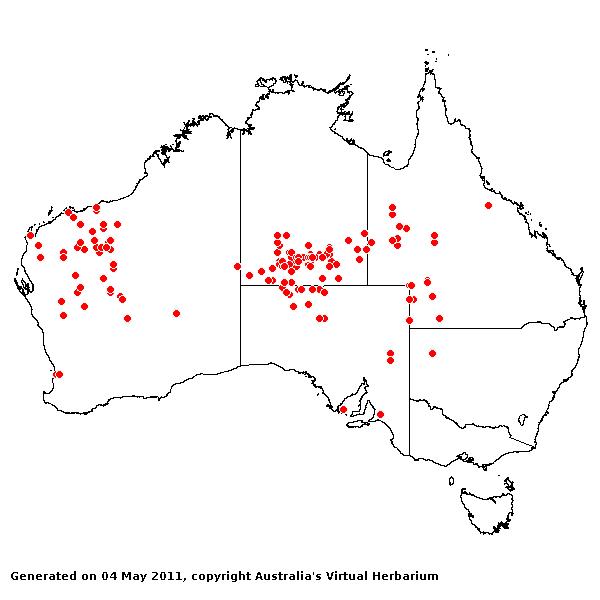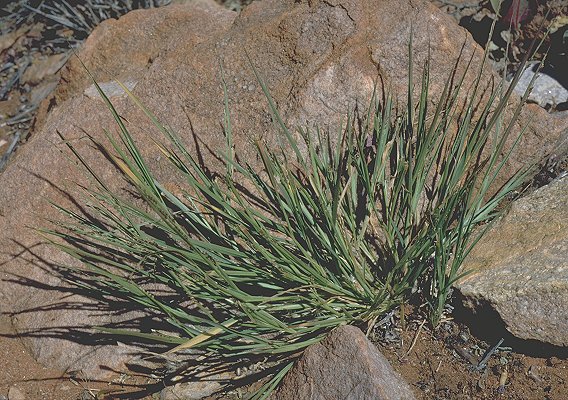Paspalidium clementii (Domin) C.E.Hubb. Bull.
Misc. Inform. 447 (1934).
Classification. (GPWG 2001) : Subfamily
Panicoideae. Paniceae.
Basionym and/or
Replacement Name: Panicum
clementii Domin, J. Linn. Soc., Bot. 41: 272 (1912).
Type of Basionym or
Protologue Information: N.W. Australia: inter fl. Ashburton et Yule, Dr.
E. Clement. s.n..
Key references
(books and floras): [1952] C.A.Gardner, Flora of Western Australia 1
Gramineae (249), [1981] M.Lazarides in J.Jessop (ed)., Flora of
Central Australia (478), [2002] D.Sharp & B.K.Simon, AusGrass,
Grasses of Australia, [2006] J.Jessop, G.R.M.Dashorst, F.M.James, Grasses
of South Australia (478 as Setaria), [2008] S.W.L.Jacobs,
R.D.B.Walley & D.J.B.Wheeler, Grasses of New South Wales (323).
Illustrations:
[2006] J.Jessop, G.R.M.Dashorst, F.M.James, Grasses of South Australia (478, Fig. 410 as Setaria), [2008]
S.W.L.Jacobs, R.D.B.Whalley & D.J.B.Wheeler, Grasses of New South Wales,
4th edn (323).
Habit. Annual.
Rhizomes absent. Culms geniculately ascending, stature slender to delicate,
10–40 cm tall, 3–7 -noded. Mid-culm internodes hollow. Mid-culm nodes glabrous.
Lateral branches sparsely branched or branched. Leaf-sheaths glabrous on
surface. Ligule a fringed membrane or a fringe of hairs, 0.5 mm long.
Leaf-blades 5–12 cm long, 2–4.5 mm wide. Leaf-blade surface scaberulous or
scabrous, glabrous.
Inflorescence.
Inflorescence compound, a panicle of racemes. Racemes 3–10, appressed,
flexuous, 1.5–4 cm long, 2–3 mm wide, bearing 8–20 fertile spikelets on each.
Central inflorescence axis 3–25 cm long.
Spikelets.
Spikelets pedicelled. Fertile spikelets 2-flowered, the lower floret barren
(rarely male), the upper fertile, comprising 1 basal sterile florets,
comprising 1 fertile floret(s), without rachilla extension, elliptic or ovate,
dorsally compressed, 1.8–2.4 mm long.
Glumes.
Glumes thinner than fertile lemma. Lower glume elliptic, membranous, without
keels, 3–5 -nerved. Lower glume surface glabrous. Lower glume apex muticous.
Upper glume elliptic, 1.7–2.4 mm long, membranous, without keels, 7–9 -nerved. Florets.
Basal sterile florets 1, barren, without significant palea. Lemma of lower
sterile floret 100 % of length of spikelet, membranous, 5–7 -nerved.
Fertile lemma 1.8–2.4
mm long, without keel. Lemma apex mucronate. Anthers 3.
Continental
Distribution: Australasia.
Australian
Distribution: Western Australia, Northern Territory, South Australia,
Queensland, New South Wales.
Western Australia:
Austin. Northern Territory: Central Australia North, Central Australia
South. South Australia: North-western, Lake Eyre, Nullabor,
Gairdner-Torrens Basin, Flinders Ranges, Eastern, Eyre Peninsula, Murray,
Southern Lofty. Queensland: Gregory North, North Kennedy, Gregory South.
New South Wales: North Far Western Plains.
Notes.
Most closely related to P. basicladium.
In shrub steppe
shrublands, acacia shrublands, arid tussock grasslands, and arid hummock
grasslands. Commonly collected in rock crevices of gorges. Flowers mostly
Apr.-Sept.





